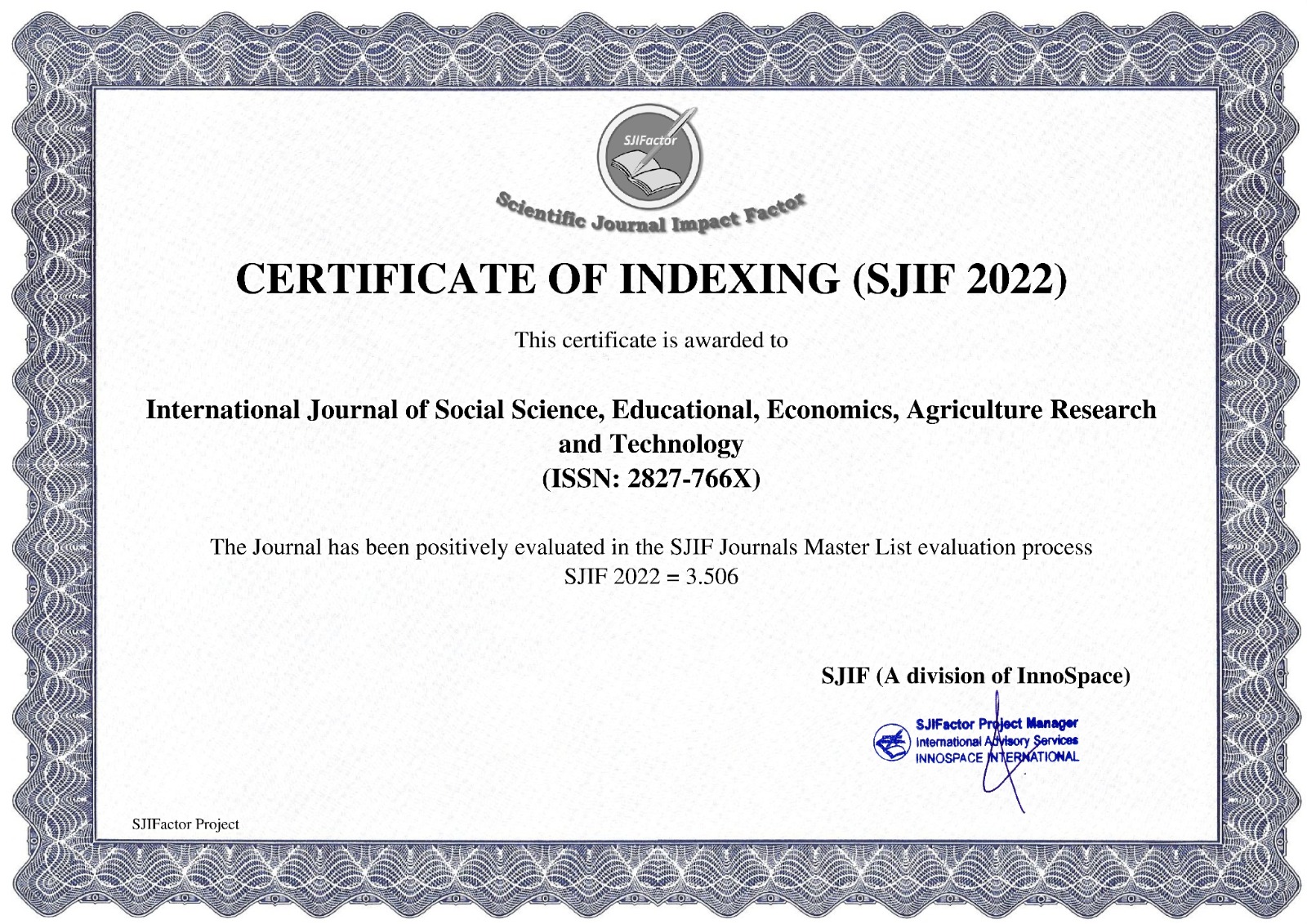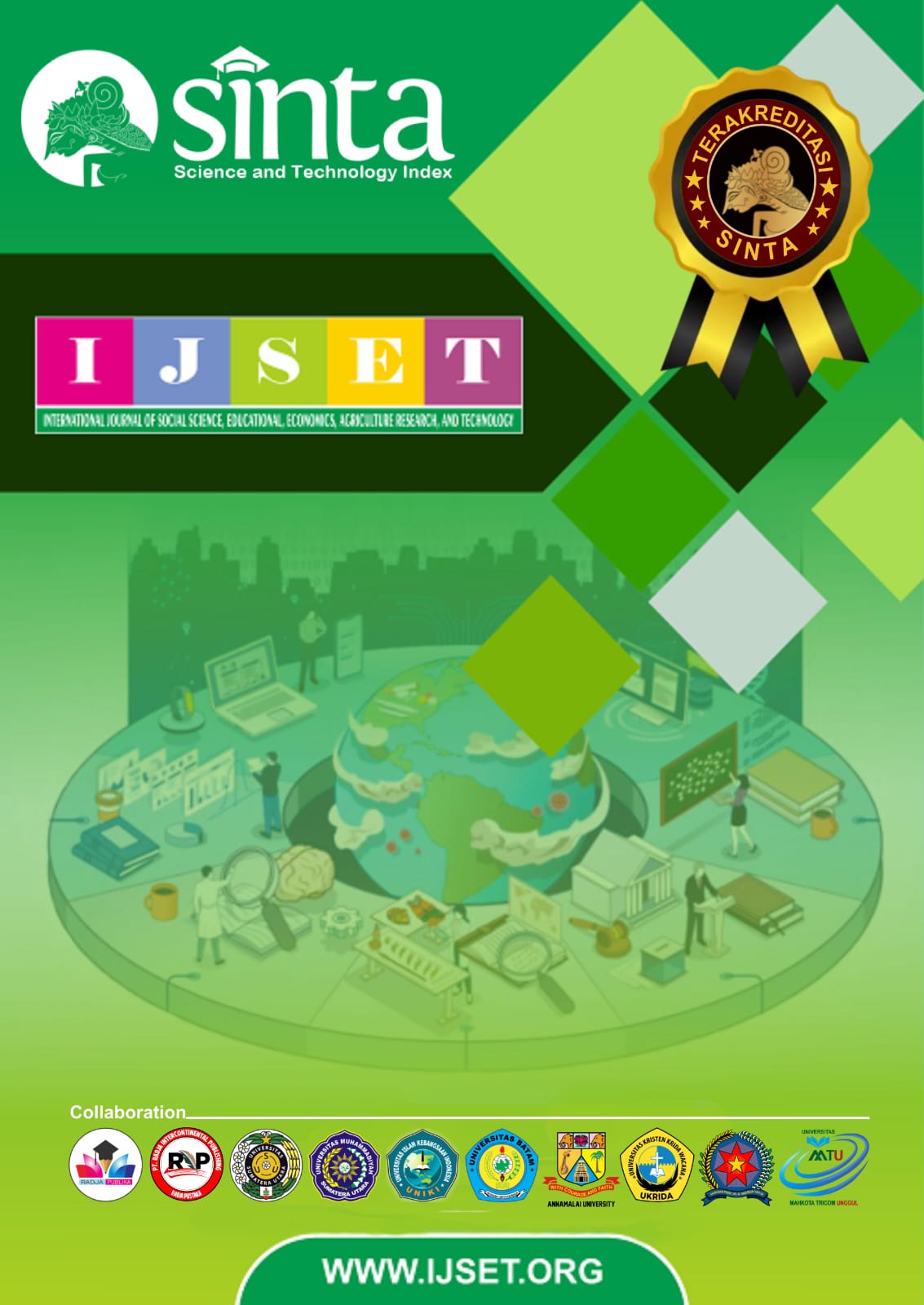"THE DETAILED IMPACT OF ACCOUNTS RECEIVABLE BALANCES ON PROFIT MANAGEMENT INDICATIONS AT PT FORTUNE INDONESIA TBK FOR THE PERIOD 2021–2024"
Main Article Content
Windy Indriyani
Diana Dewi
Nurul Adhani Ilham
Nurul Shofiyah
Sri Nurdewi Sartika Astuti
This study aims to analyze the impact of detailed accounts receivable balances on indications of earnings management practices at PT Fortune Indonesia Tbk during the 2021–2024 period. The main focus of the study is to evaluate the role of accounts receivable and allowance for doubtful accounts as potential instruments in accrual-based earnings management practices. The method used is a descriptive quantitative approach utilizing secondary data from the company's financial statements. The analytical techniques applied include calculating the accounts receivable-to-revenue ratio and the allowance for doubtful accounts to gross receivables ratio, accompanied by observations of fluctuation trends from year to year. The results show significant fluctuations in both ratios, including the write-off of receivables without allowance in 2024. These findings indicate potential earnings management practices, especially in the 2022 and 2024 periods, through a disproportionate decrease in allowance for doubtful accounts and accelerated recognition of credit revenue. Thus, detailed accounts receivable can be an important indicator in detecting manipulative practices in financial statements, as well as providing input for auditors to focus on detailed audits of accounts receivable balances.
Al-Begali, S. A. A., & Phua, L. K. (2023). Accruals, real earnings management, and CEO demographic attributes in emerging markets: Does concentration of family ownership count? Cogent Business and Management, 10(2). https://doi.org/10.1080/23311975.2023.2239979
Bahri, N. S., & Wijayanto, R. (2025). PERTUMBUHAN. Jurnal Ekonomi Trisakti, 5(2), 1095– 1102.
Christensen, T. E., Huffman, A., Lewis-Western, M. F., & Valentine, K. (2023). A Simple Approach to Better Distinguish Real Earnings Manipulation from Strategy Changes*. Contemporary Accounting Research, 40(1), 406–450. https://doi.org/10.1111/1911-
12830
Dang, A. T., & Khanh Dung, N. N. (2024). The Impact of Covid-19 on Earnings Management: Empirical Evidence from Vietnam. SAGE Open, 14(3), 1–16. https://doi.org/10.1177/21582440241266974
Istrate, C., & Carp, M. (2024). Earnings Management Detection, from Second Digit Frequencies to Discretionary Accruals: Evidence from the Alternative Market of the Bucharest Stock Exchange. Eastern European Economics, 00(00), 1–29. https://doi.org/10.1080/00128775.2024.2428792
Kevin, J., & Taufik, H. (2023). Faktor-Faktor yang Memengaruhi Manajemen Laba pada Perusahaan Manufaktur di Indonesia. Jurnal Manajemen Bisnis Dan Keuangan, 4(2), 108–120. https://doi.org/10.51805/jmbk.v4i2.123
Khairudin, K., Alam, I. A., & Pangestu, K. S. (2022). Analisis Strategi Pengelolaan Piutang Dalam Meminimalisir Piutang Macet Pada Pt Pln (Persero) Up3 Tanjung Karang. Derivatif : Jurnal Manajemen, 16(2), 247–254. https://doi.org/10.24127/jm.v16i2.1005
Krisdayanti, D., Hidayat, R. R., & Atmant0, D. (2018). Efektivitas Pengelolaan Piutang Untuk Meningkatkan Laba Perusahaan. Jurnal Administrasi Bisnis (JAB), 56(1), 137–145.
Krismiaji, Purnamasari, D. I., & Sumayyah. (2025). Audit Quality and Real Earnings
Management: Insights from Indonesia. Review of Integrative Business and Economics Research, 14(2), 137–151.
Le, M. D., & Dinh, T. N. (2025). Income smoothing through loan loss provisions in Asia– Pacific commercial banks: the role of managerial ability. Journal of Economics, Finance and Administrative Science, September. https://doi.org/10.1108/JEFAS-09- 2024-0303
Prasetyo, M. P., & Suhendah, R. (2023). The Effect of Profitability, Leverage, and Managerial Ownership on Earnings Management. International Journal of Application on Economics and Business, 1(1), 98–105. https://doi.org/10.24912/v1i1.98-105
Safputri, D. M. (2024). Pengaruh Manajemen Laba Akrual, Manajemen Laba Rill, Dan Intensitas Modal Terhadap Agresivitas Pajak.
Setiawan, H., & Putri, M. A. (2023). Pengaruh Perputaran Kas, Perputaran Piutang Dan Perputaran Persediaan Terhadap Profitabilitas. Jurnal Ilmiah Akuntansi Kesatuan, 11(1), 175–186. https://doi.org/10.37641/jiakes.v11i1.1723
Sinatra, J. A., Manik, V. A., & Firmansyah, A. (2022). Dampak Adopsi International Financial Reporting Standards (Ifrs) Di Indonesia: Pendekatan Manajemen Laba Dan Relevansi Nilai. Jurnal Pajak Dan Keuangan Negara (PKN), 3(2), 284–293. https://doi.org/10.31092/jpkn.v3i2.1531
Sudalyo, R. A. T., & Prasetyaningrum, N. E. (2023). The Influence of Digital Marketing on Accounting Decisions: Implications and Challenges. Jurnal Ekuisci, 1(2), 85–94. https://doi.org/10.62885/ekuisci.v1i2.99
Susanti, F. agatha, & Aryati, T. (2023). Pengaruh Manajemen Laba melalui akrual diskresioner terhadap nilai relevansi informasi akuntansi pada perusahaan manufaktur. In European Journal of Social Psychology (Vol. 30, Issue 5, pp. 1815–1822). https://doi.org/10.1002/1099-0992(200009/10)30:5<613::aid-ejsp11>3.3.co;2-j
Winarni, G. S. dan F. (2025). PENGARUH CADANGAN KERUGIAN PIUTANG TERHADAP PROFITABILITAS PERUSAHAAN. Muchlisin Riadi, 1(2), 118.
http://www.kajianpustaka.com/2012/10/profitabilitas-perusahaan.html
Wulan Astriah, S., Trinanda Akbar, R., & Apriyanti, E. (2021). JURNAL AKUNTANSI, Vol. 10, No. 2, November (2021) PENGARUH UKURAN PERUSAHAAN, PROFITABILITAS DAN LEVERAGE TERHADAP MANAJEMEN LABA. Jurnal
Akuntansi, 10(2), 387–401.






















